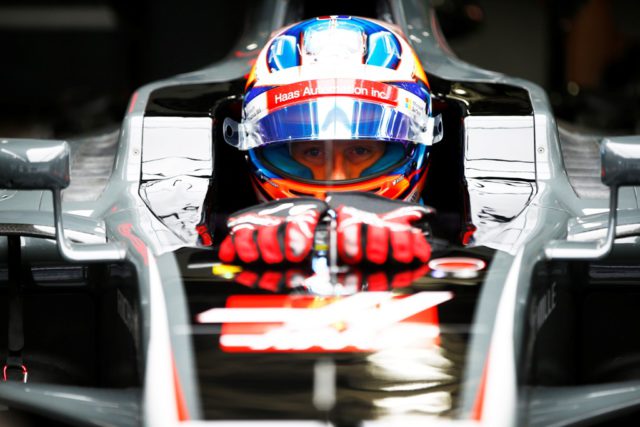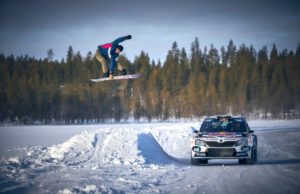Romain Grosjean and Kevin Magnussen have earned points-paying drives at COTA. In the second Formula One race at the 5.513-kilometer (3.426-mile), 20-turn track in 2013, Grosjean finished a career-best second to the dominant Red Bull of Sebastian Vettel. It’s one of three point-paying results Grosjean has achieved in his six career Formula One starts at COTA. Teammate Magnussen finished in the points in his first F1 start there in 2014 when he came home eighth. And in his second Formula One start at COTA in 2016, Magnussen finished a respectable 12th.
This duo has combined for Haas F1 Team’s best season to date, and with their sights set on fourth place in the constructors’ standings, they look to turn Austin into #Haastin with another points-paying performance.
In joining Haas F1 Team, you took a leap of faith in the vision Gene Haas had for an American Formula One team. What has it been like to be a part of this endeavor and what makes Haas F1 Team different from other Formula One teams?
“I’d say it’s a great adventure. When I met with Gene and Guenther for the first time, I felt that they knew what they were talking about. I wanted to be part of that journey. I’m very pleased with how it’s gone. In our third year now, things are as good as they can be. We’re fighting for fourth in the constructors’ championship, which is quite crazy.”
Haas F1 Team has accomplished a lot in less than three years in Formula One. Can you talk about the team’s growth this year and, specifically, how it has outperformed compared to last year?
“We’ve made a good step this year. I think 2017 was maybe the year where we underperformed, but in 2018 we’ve come back to the route being planned out since the start of the team. The team has been growing a lot and improving in every single area. There’s still room for improvement, which is amazing to know and to see.”
You’re racing for an American team in the United States Grand Prix. Because of that, does walking into the paddock at COTA and driving out of the garage and onto the track take on greater significance or give you an added sense of pride?
“It’s special. It’s like when I’m in the French Grand Prix, I get an extra feeling, something special. At COTA, it’s the same thing. You expect a lot of fans to be coming and cheering for you. You can see them there wearing the Haas colours, T-shirts, caps, scarfs, whatever. It’s just great to know that it’s not always about, say, Lewis (Hamilton) or Max (Verstappen), but that it’s about Haas F1 Team as well.”
Formula One returned to the United States after a four-year absence when it raced at COTA in 2012. You participated in that race. What was the industry’s reaction to Formula One’s return to America?
“I didn’t know what to expect the first time we went to COTA in 2012. Obviously, many people still had in mind the 2005 grand prix at Indianapolis. When we came back though, it was probably the biggest attendance of the season that year. It’s always packed. It’s a great circuit with a great atmosphere. I love going there.”
When you first competed at COTA, what did you think of the venue?
“It was very nice and very well organized. The city is great. There are a lot of bars and concerts going on in the city, and people came from all over the country to see the race. It was amazing.”
You equalled your career-best Formula One finish (second) at COTA in 2013. Talk about that race and any moments that stand out, particularly the start where you managed to get away from the dominant Red Bulls.
“The start was very special. I had a really good one. The Red Bulls were so much faster than we were. I had to do something like 50 laps of the grand prix with Mark Webber on my gearbox. He was trying everything he could to pass me. At the time we had manual KERS, and I was using it wisely at different places every lap, just to do something different to keep him behind. It was an amazing race. I had a bit too much champagne on the podium, which made the press conference fun.”
COTA’s first corner is at the top of a hill – a blind and tight left-hander that sends drivers into a section modelled after Silverstone’s Maggotts-Becketts-Chapel complex. How do you approach that corner knowing there’s a moment when you don’t know what’s on the other side?
“You know that nobody’s coming the wrong way, so that really helps when you come to the corner. It’s really about focusing on the right thing at the right time. First the braking point, then the turning point, and then the apex and exit. Yes it’s a blind corner, but once you’ve got in the rhythm you just take it all step-by-step and there are no surprises.”
COTA has been described as having the most overtaking opportunities of any track on the Formula One calendar. Is this accurate and, if so, what makes COTA better for overtaking than other venues?
“It’s not that simple to overtake at COTA. You’ve got a huge straight line on the backstraight, which helps, of course, with the DRS. The braking into turn one is very wide and you can have some chances there. But, on the other hand, it’s very hard to follow in sector one, and into that very long right-hand side corner before the last two corners.”
What is your favourite part of COTA?
“All of sector one.”
Describe a lap around COTA.
“First you brake on the very wide track uphill into turn one. You then have tricky traction going downhill through sector one. It’s very high speed – very similar to Silverstone. Here you try to carry some good speed. Then you go to the hairpin before the backstraight, again you want good traction here. There’s very big braking at the end. Then there’s a very tight section with a double right corner. After that it’s a long left hairpin, with tricky braking, then a full right-hand side corner, almost flat out in qualifying. Then it’s the two mid-speed final turns, which are pretty interesting, going down into the first one, and the second one going up again before you finish the lap.”
Austin has become a destination venue for the Formula One industry, much like Singapore and Monaco. Why does the city resonate so well with those in Formula One?
“I think because it’s the United States Grand Prix. Austin is a great city and it gets a lot of fans visiting, too. There’s also a great atmosphere around the track.”
How much of Austin have you been able to explore, and is there an area of the city you like the most?
“I’ve seen quite a bit of Austin. The nightlife is amazing, too. During the day there are some nice shopping centres. It’s a great place.”
How important is the United States Grand Prix to Haas F1 Team and to Formula One’s recognition in America?
“It’s very important for us. It’s our home race. To have more recognition in the United States, we need more than one grand prix, just because the time zones don’t always work. It’s not easy to follow Formula One in America. It’s different from NASCAR or IndyCar. We would probably need another two or three races to get more of an audience there.”
Would you like to see another Formula One race in America?
“Yes. Miami’s been talked about. Los Angeles or Las Vegas have too. I think if we had Austin, then one race on the east coast, another on the west coast, and with Canada and Mexico too, that would be pretty good.”
Off to Austin ??????✈️✈️#r8g pic.twitter.com/Ttyv2S7cjd
— Romain Grosjean (@RGrosjean) October 16, 2018
































